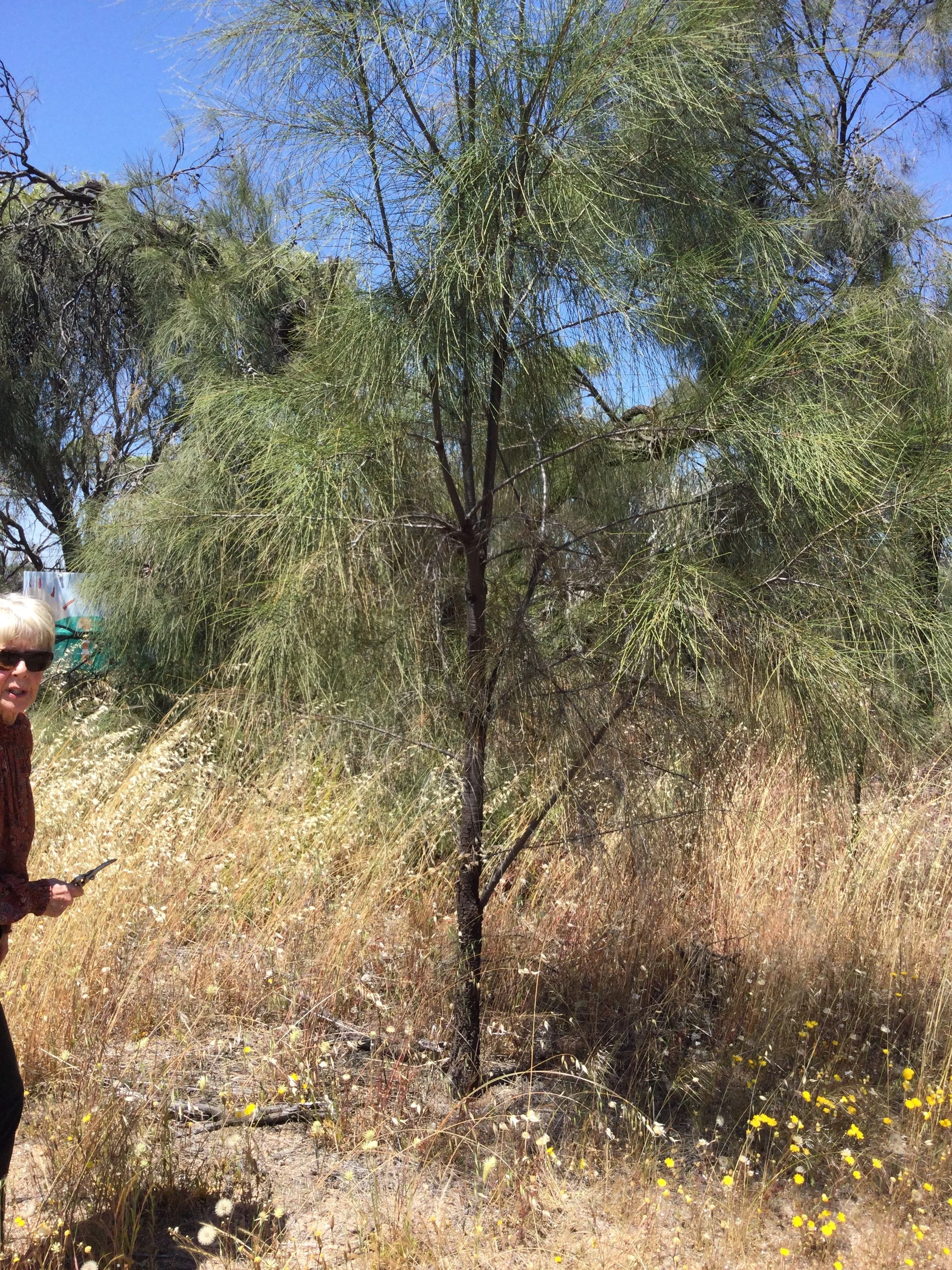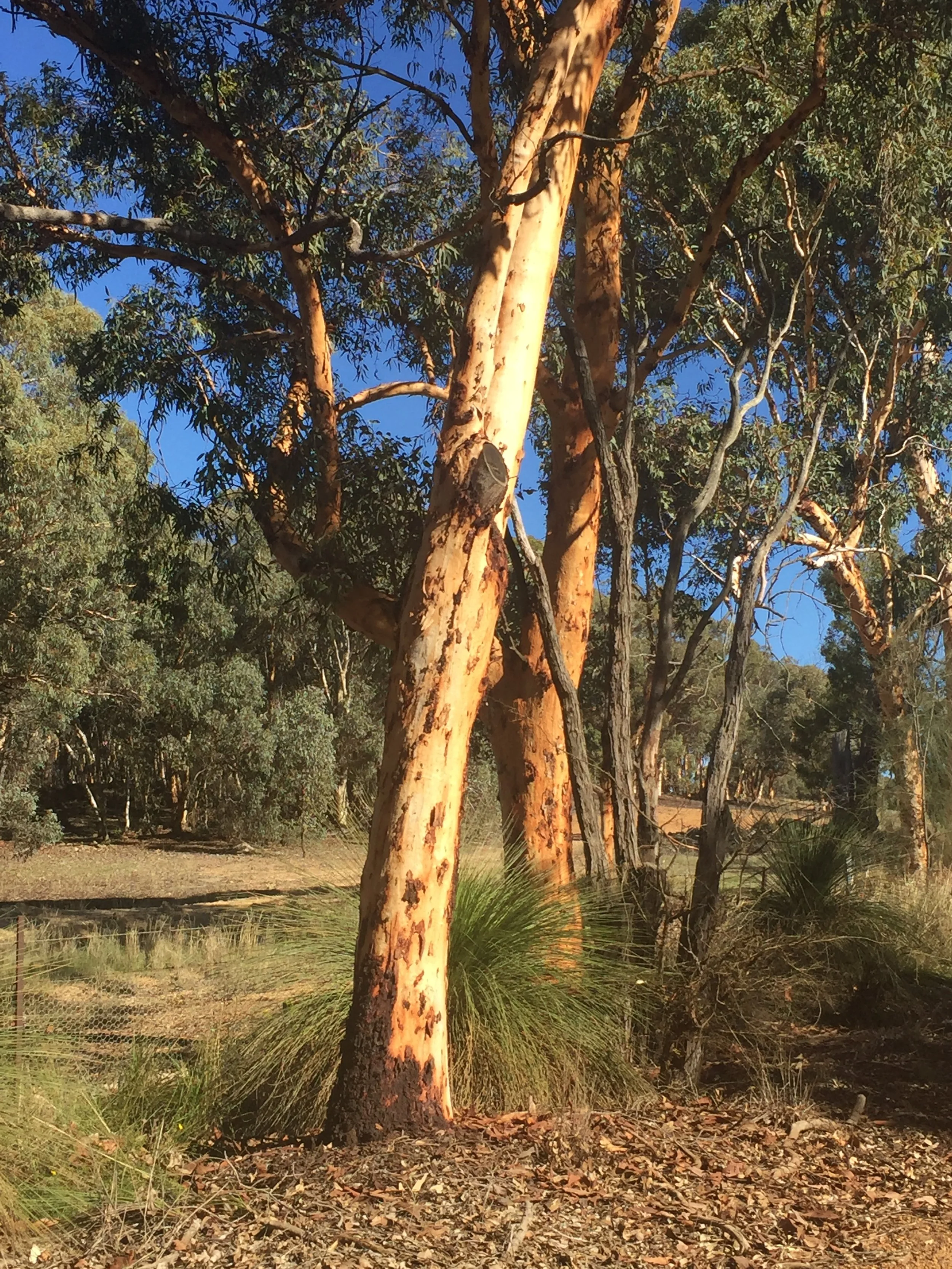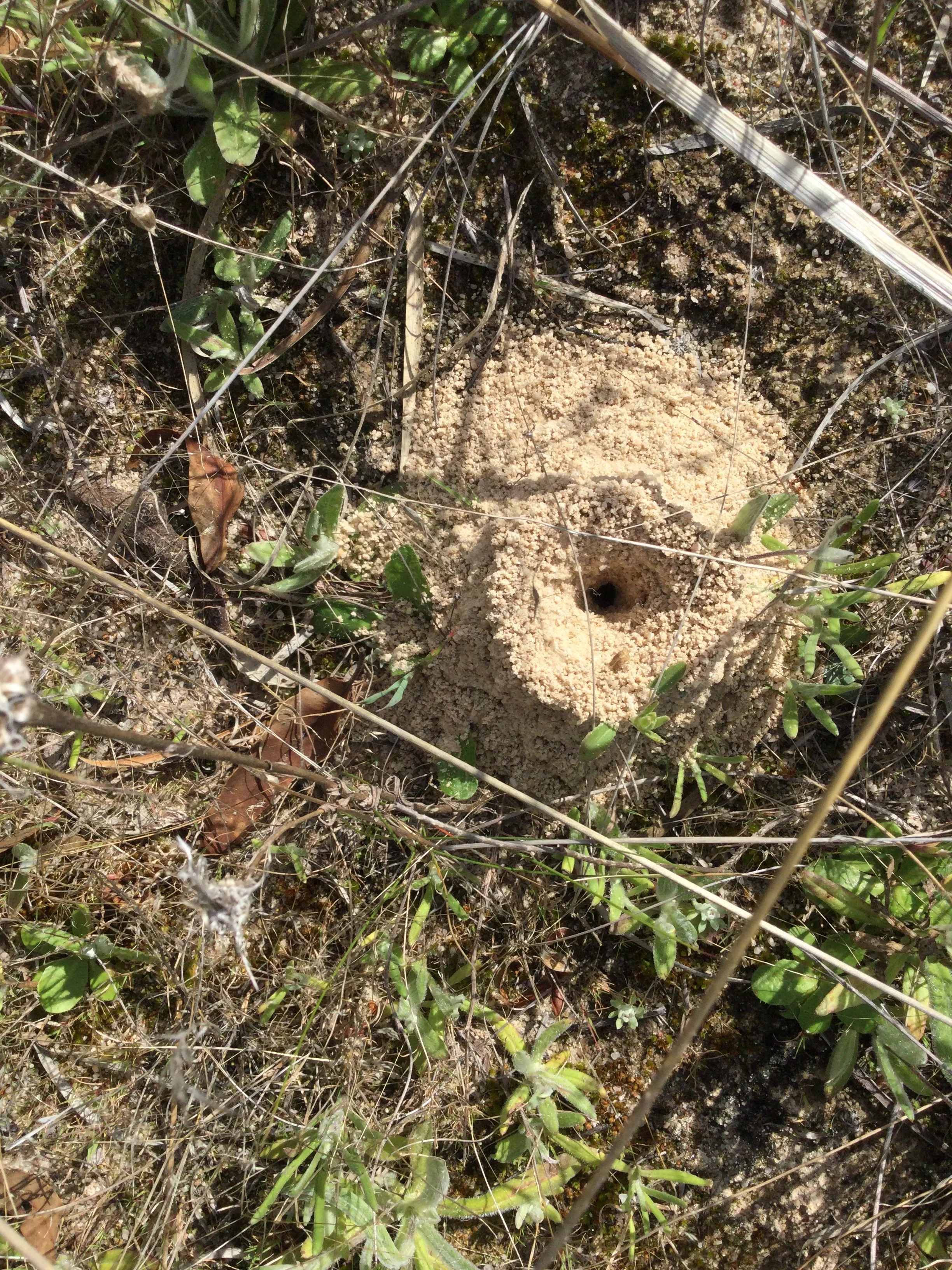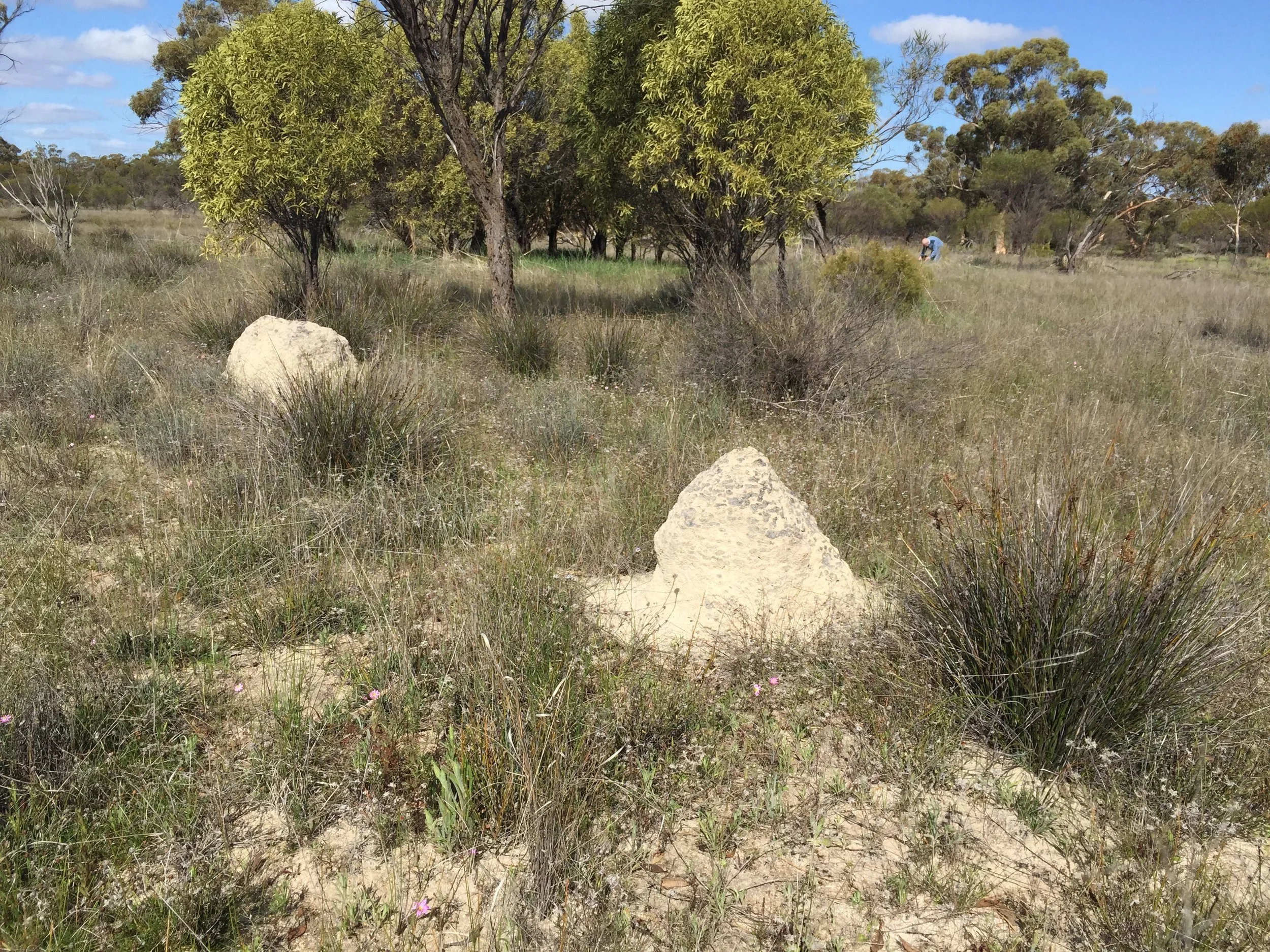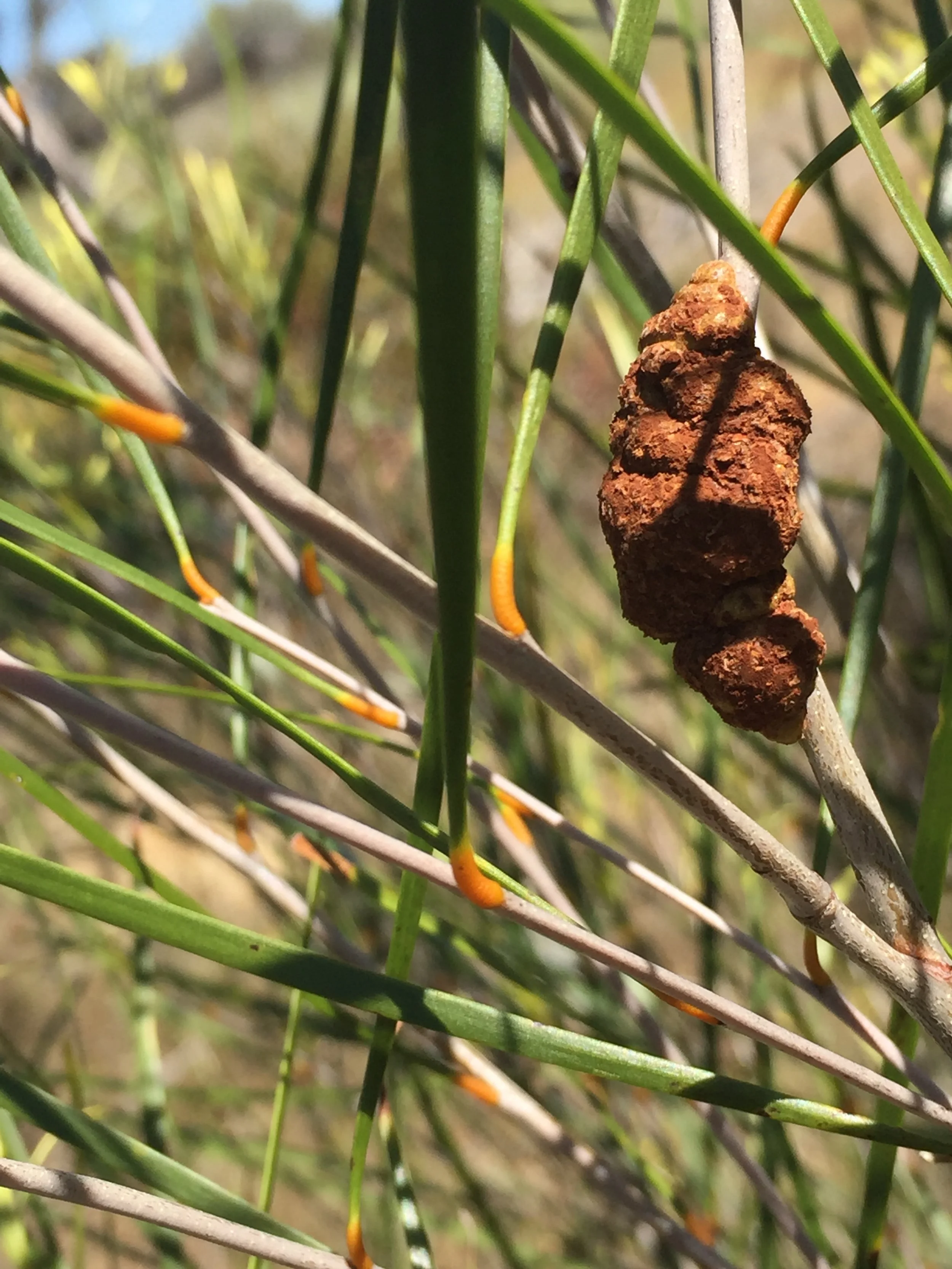On Country
Working with Trees, Leaves and Animals
The late Kevan Davis, Ballardong Elder, says about sheoaks
…“yorgas gave birth under them … Mothers placed their babies on the carpet of sheoak needles. The sound of the breeze through the kwel is the spirits of the Ancestors speaking, which gently lulled the babies to sleep...”
Activity
Engage with the Aboriginal Community:
If students are accompanied by Aboriginal educators, they will benefit from discussion and knowledge about the area, for example,
1. How Aboriginal people may have lived there.
2. Perhaps what they ate
3. Information about the trees that were important in their lives
4. Perhaps share their knowledge about quandong trees (wongup) (Santalum acuminatum) such as:
• wood was used for spear shafts
• roots have juicy suckers, and were dug up and eaten,
• a cut branch oozes a sugary gum, which was eaten
• flowers when soaked in water make a sweet drink (kapi, kep)
• fruits were eaten or dried for later use
• nut kernels were roasted and eaten
• seeds were ground into a paste with water and used as a medicine for skin sores.
5. They may share their knowledge about sheoak trees (kondil, kwel)
Sheoaks are found throughout the Wheatbelt and had many uses, such as
• wooden implements were made from sheoak
• the mia (Aboriginal shelter) was supported by sheoak branches
• fire was carried between camps in a piece of burning sheoak
• young cones were eaten
• the needle-like dead ‘leaves’ underneath were used for bedding in the mia, they were of cultural importance.
Quandong Fruit (Wongup)
Activity
Count and Record Trees:
Guide students to use their notebooks.
1. Have them identify 3 or 4 trees as they wander around the area.
2. Students count each tree type (species) and record, using tallies, in their notebook.
3. Each student carefully collects a leaf from each tree to explore in the classroom
4. Students may want to explore further, but for reliability, all students count in the same area – about half a hectare (a little less than an acre). This provides discussion on the accuracy of their recordings.
Sheoak Tree (kondil, kwel)
Quandong Tree
Wandoo, Pink
Activity
Collect Litter:
Using a snap-lock plastic bag (or alternative) have students gather items of litter in the tree area, including
• leaves of different colours, texture, or shape
• pods, nuts and seeds
• bark and small woody stems
• flower parts
• feathers
• sample of sand or rock
• small sample of discrete animal droppings, called scats (if practicable). These items will be sorted in the classroom.
Collecting Litter
Activity
Look for Animals, and Where they Live:
1. Ask the Aboriginal educators if they would share their knowledge about animals, and help students to find an animal, or evidence of its home. This may be:
• lerps on wattle stems,
• holes in the bark or stem usually made by a wood-boring beetle to lay its egg,
• ants and their nest,
• a mound where termites live,
• larvae (bardis) found in the soil often at the base of a wattle tree,
• a burrow where a lizard shelters,
• a bird’s nest,
• a spider’s hole or a web,
• an insect’s gall on a tree’s stem
• an animal’s tracks, diggings and scats
2. Students record in their science notebook the name of the animal, and where they saw it.
Teacher note: In the classroom, students will transfer these findings into WORKSHEET 1.
3. Photograph. May be done by the teacher using iPad, or iPhone with App.
4. Dig. The Aboriginal educator may demonstrate with her digging stick (wanna) how to dig for bardi, often found at the base of wattle trees. A bardi is the larval form of a moth and may introduce discussion about life cycles. This topic is studied more fully in Years 3/4.
5. Using pit-traps. The teacher (with student help) inserts 4 or 5 pits about 2 metres from the base of the trees. Their placement is designed to capture invertebrates that live in a tree’s litter.
Pits are installed with the lid ON, and with the rim f lush with the ground surface. Small animals will not climb up a glass barrier!
• Pack the soil firmly around the rim, and remove the lid.
• Lids are left near the trap and replaced (temporarily) in case of rain.
Teacher note: There are few invertebrates in litter under she-oak trees.
Ant Nest
Termite Mound
Wattle Gall
Activity
Look for Birds:
• Record nests where seen, or record bird seen flying.
• Record bird calls heard. The teacher may record these on an iPad or audio recorder.
• Birds may be drawn in the classroom and added to the habitat model.
Carnaby’s in flight, Marg Owen

